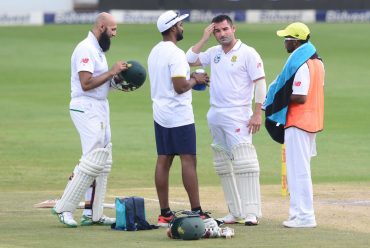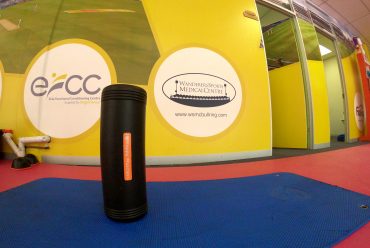A Bruised Heel
A Bruised Heel
An injury which a common and debilitating to fast bowlers, is the front foot bruised heel or also known as the Policeman's heel. The area of concern is often inflammation to the fat pad, which forms as a shock absorber to the heel bone (calcaneus). Due to repetitive front foot heel strike impact (7-9times a bowlers body weight) and ground reaction forces, this may well become an overuse injury which can keep a bowler out for a while.
Apart from a cricketer experiencing this injury, gymnasts, long distance runners, skydivers (when landing), indoor volleyball, basketball
players and military/police individuals also experience this type of injury due to excessive heel striking. Therefore good shock absorption is extremely important in footwear. A military/police individual marches on very hard soles which would result in injury. Similarly a long distance runner, who's running shoes is their only equipment, needs to have a shoe with proper shock absorption and it needs to be changed regularly. It is said that a running shoe only lasts 600km, before the cushioning is worn out. A long distance athlete should also own 2 of the same model running shoe, one would be to train in and the other used to compete in. Buying a proper running shoe is also dependent on the individual's weight and the shoe should be bought to suit his/her weight.
The heel will always be subject to stress when performing activities, however specific factors may place an individual at greater risk to injury. They are the following:
Excessive body weight and ground reaction forces
Age
Poorly cushioned or worn out running shoes
Hard inner soles/orthotics
Increases in workload/mileage
Hard/uneven training surfaces
Training barefoot
A heel bruise can occur from a one time accident (poor skydiving landing) from a height or repetitive landing over time (front foot fast bowling landing).
As a fast bowler it is often important to eliminate a stress fracture to the heel. An x-ray or MRI can be done, with the latter being more precise, with regards to a possible stress fracture but can also guide us in diagnosing the area of fat pad pockets inflammed.
Treatment for this particular injury involves P.R.I.C.E
P - Protection - the individual must not put weight through the heel, crutches
may be used.
R - Rest - the individual must stop all activity and loading until pain subsides.
I - Ice - regular icing is important to reduce pain and inflammation. Icing
should only be done for 20min at a time, every 2 hours.
C - Compression - the heel needs to be compressed with a bandage to help
limit inflammation and bleeding.
E - Elevation - Keep the heel above heart level for effective lymph (waste) drainage.
Once the individual is able to weight bear without pain, silicone heel cups need to be inserted into shoes to help healing. Orthotics if used should not be made of hard material, as this could have caused the initial injury and therefore would not allow for healing. Good cushioned footwear can go a long way in protecting the heel from reinjury.
@Craig_gov






